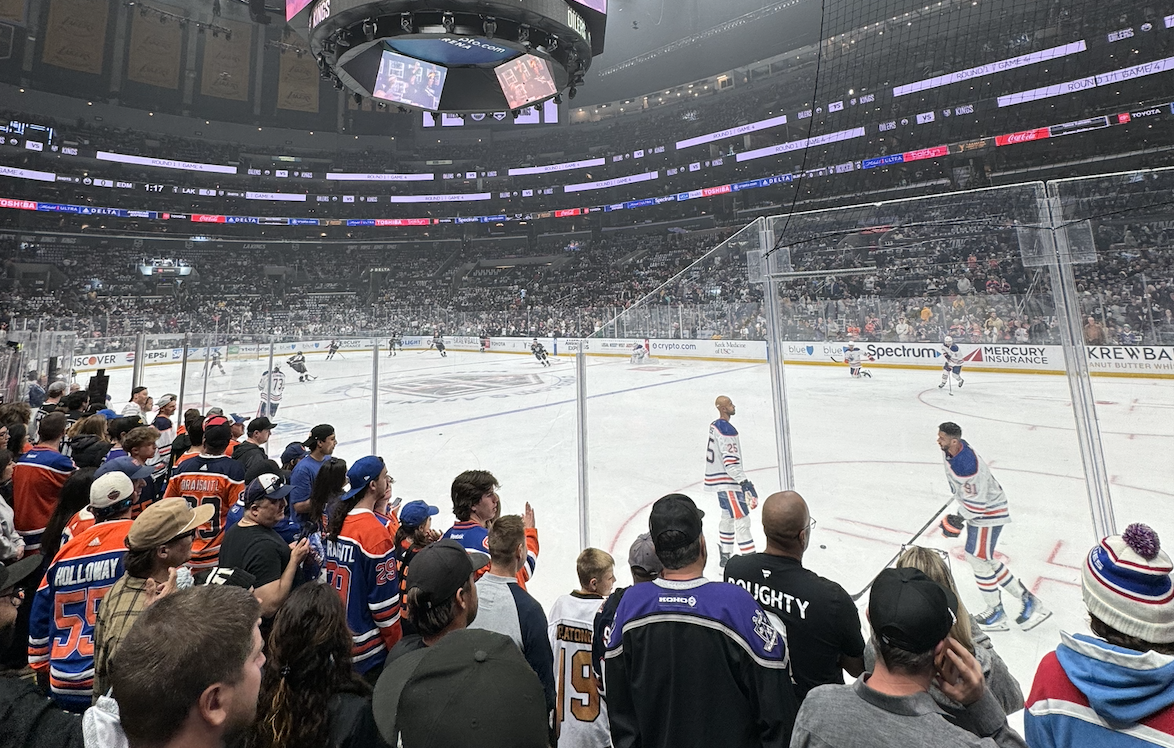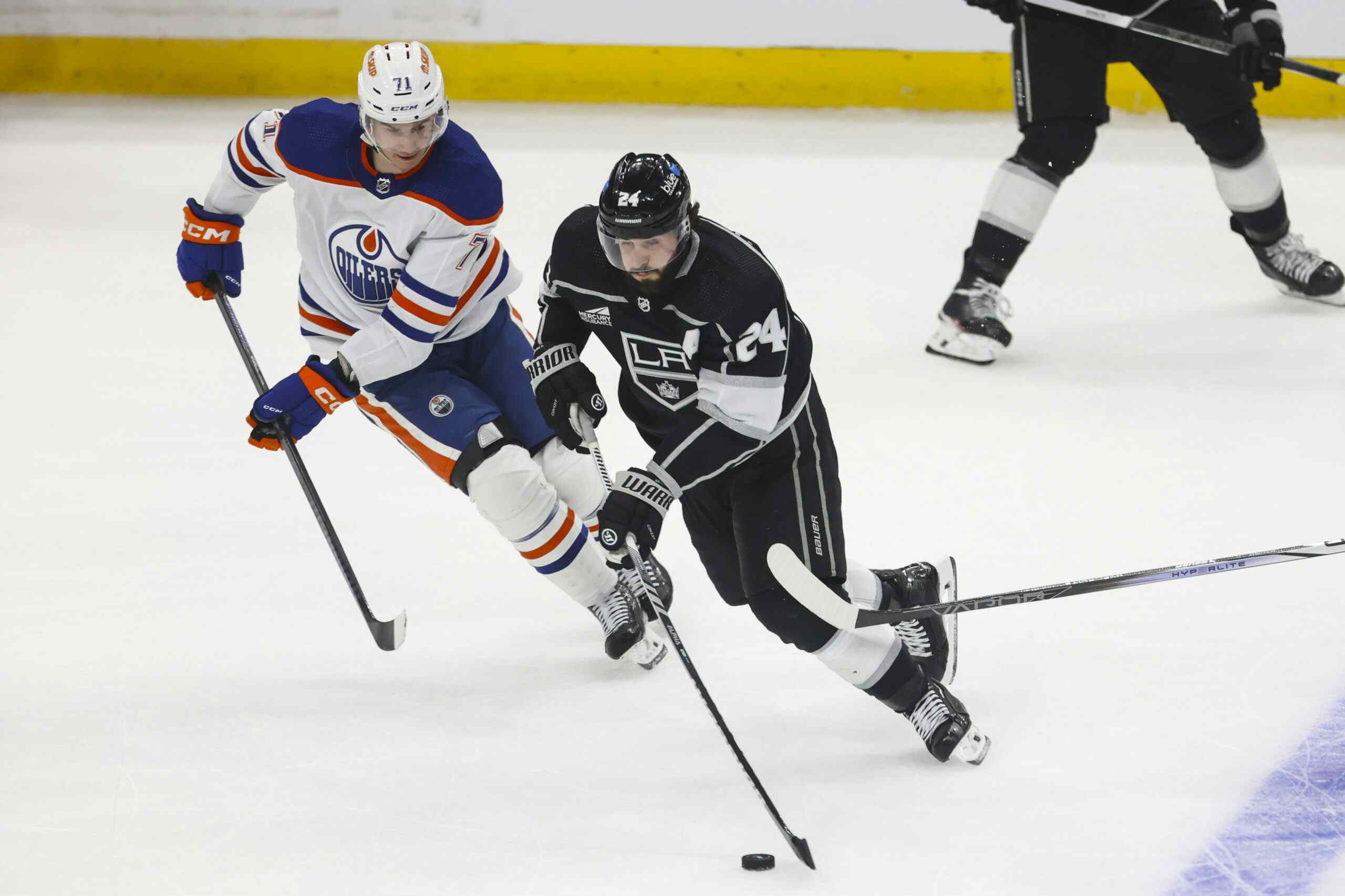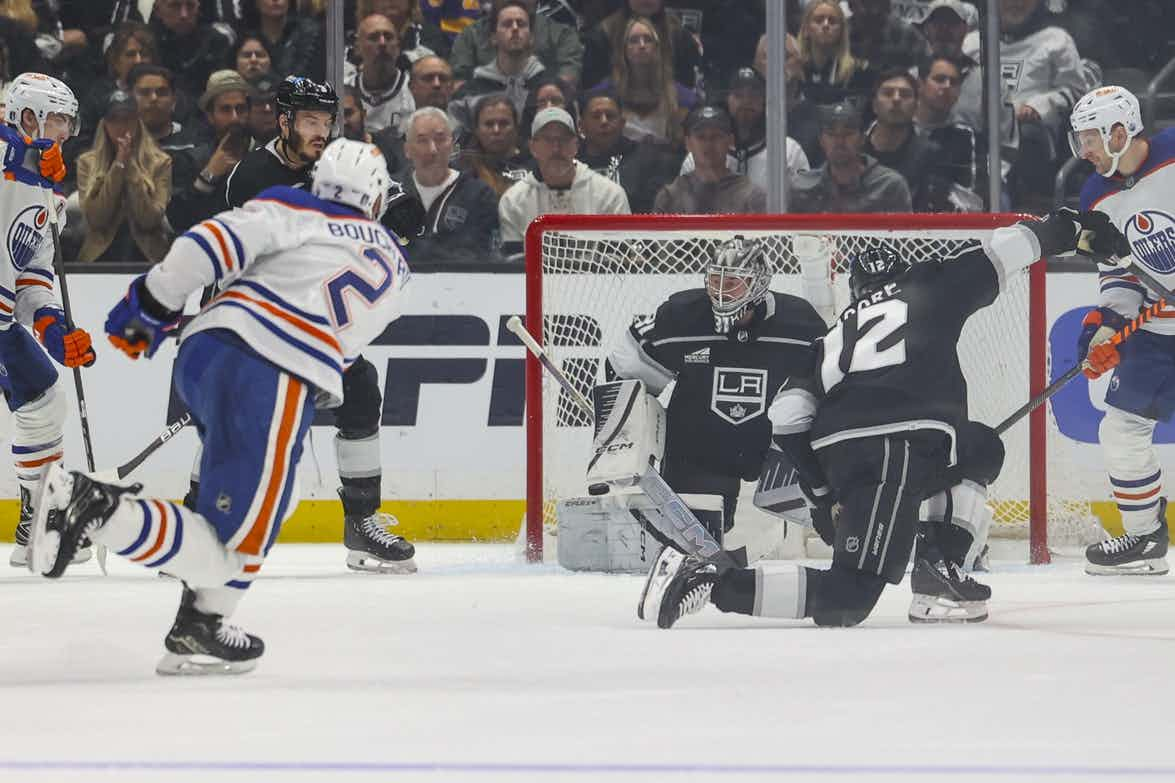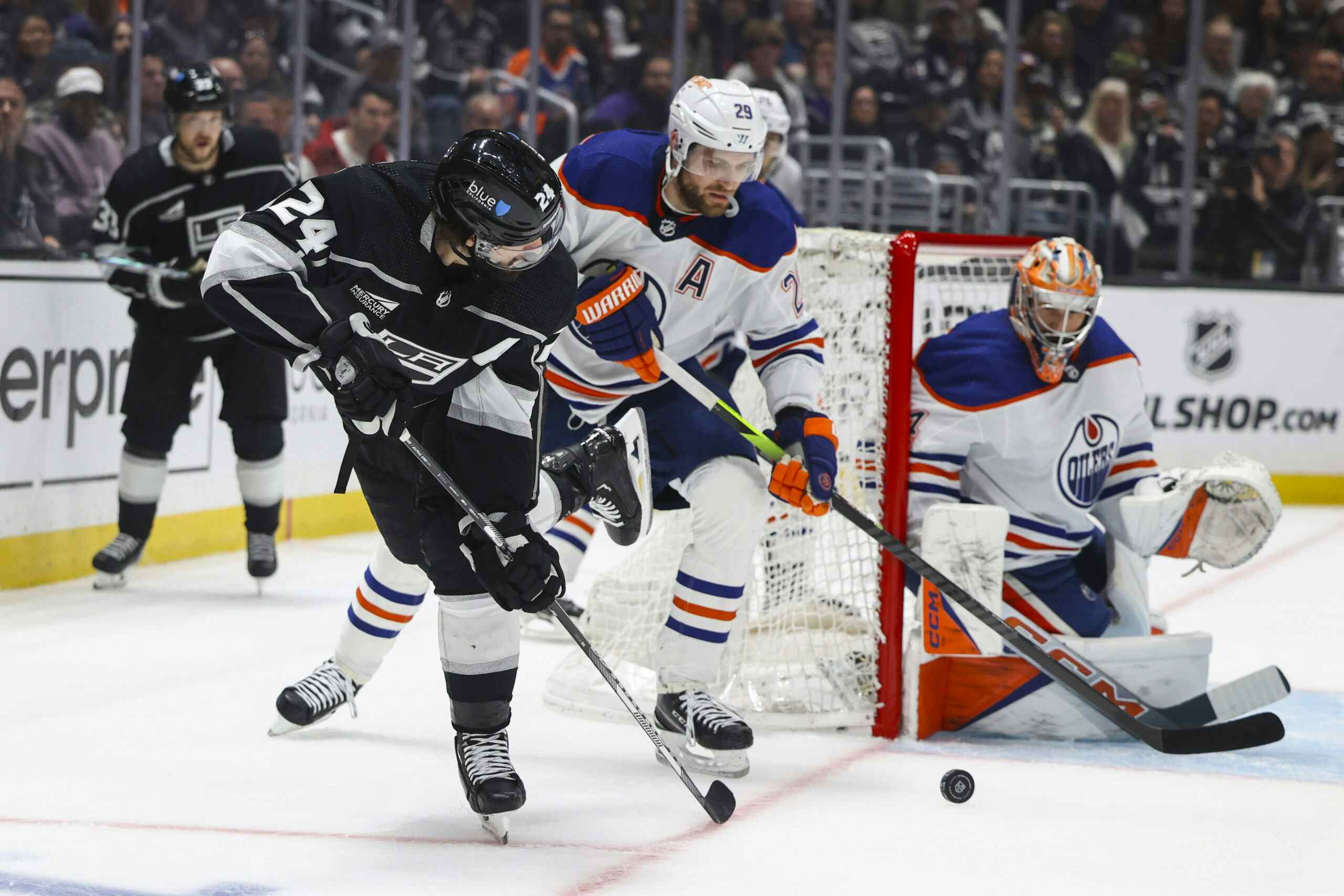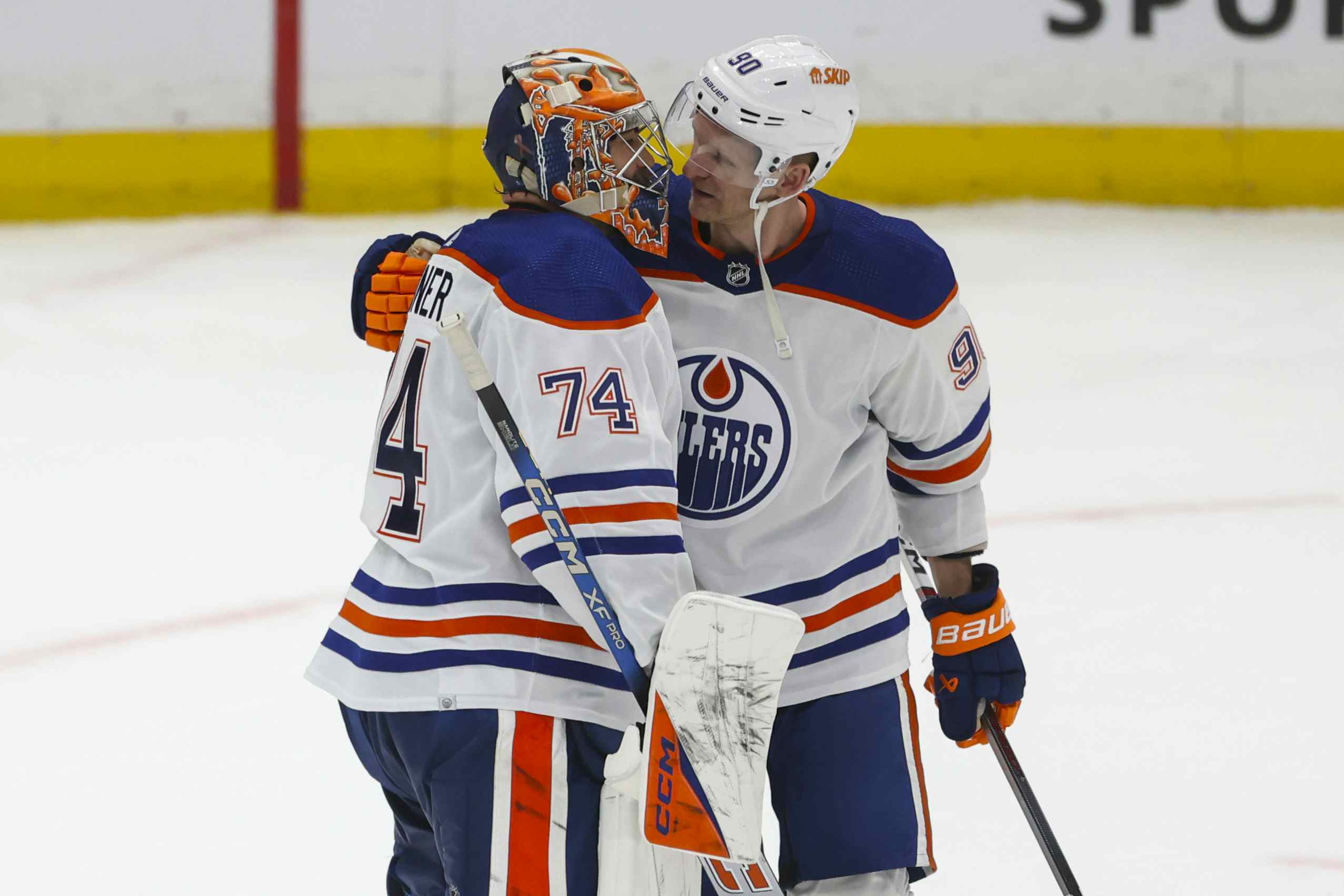The Real Winner of the Oilers’ Rebuild
The rebuild isn’t over – but there is already a clear winner.
There are those out there passionately committed to the idea of a bottom-to-top rebuild, a systematic restructuring of the Edmonton Oilers that sees the team wander for an unspecified but finite time in the hockey wilderness before finally emerging into the promised land. They include fans, columnists both paid directly by the Oilers and financially independent of the organization, and undoubtedly people in the team’s management structure.
There are others who see the rebuild as an exercise in futility as long as the current management leads the way. The Oilers hit the lowest point in franchise history under this group, the reasoning goes; there’s no need to allow them to repeat their mistakes.
Both schools of thought miss the fact that the rebuild has already been a fantastic success in what is likely the most important area for its primary author.
Steve Tambellini took the helm of the Oilers in the summer of 2008. It’s a date that many have quibbled with and in all likelihood will continue to quibble with, but it’s an important date to remember. There are those among both fans and the media who like to obfuscate the issue, to suggest that Tambellini really took the helm at the 2009 trade deadline, or the summer of 2009, or when the rebuild was officially declared midway through 2009-10, or possibly when the Oilers drafted Taylor Hall at the 2010 Draft.
Such stories are always presented without anything remotely tangible in terms of proof, leaving the reader to debate their merit based on his personal opinion of both the writer presenting it, and how the Oilers are run; the latter typically influenced heavily by the same hope that has created a groundswell of support for the Oilers’ rebuilding work.
The stories are fuelled either by conjecture or by the dark whispers of unnamed sources, as no writer to date has managed to get someone with firsthand knowledge to go on record about how the transition from Kevin Lowe to Steve Tambellini has transpired, and identify a clear date of power transfer other than the one on the official record.
TALES OF YORE

All such stories, without some sort of tangible evidence, run directly counter to the law of parsimony, commonly called Occam’s Razor. Occam’s Razor tells us that when presented with differing explanations of fact, we should accept the one that requires the least amount of assumption.
We, then, are faced with a choice. We can choose to believe that Steve Tambellini, a well-respected hockey man with a long run at a largely successful team, a man whose name frequently came up under the heading of ‘guys ready to run an NHL team who aren’t doing it yet’ abandoned the number two role in Vancouver for the same role in Edmonton, with the caveat that he was to be the franchise’s public face and take the blame whenever anything went sour.
This belief also requires Kevin Lowe, who supposedly is pulling the strings, to have fired a whole bunch of people who had spent nearly a decade working for him. Or, we can choose to believe that Tambellini and his solid pre-Edmonton resume really did take over when he was hired, and that Kevin Lowe has moved into the same sort of elder statesman role that men like Jim Devellano in Detroit, Bob Clarke in Philadelphia, and Pierre Lacroix in Colorado have taken. Barring tangible evidence to the contrary, the latter explanation is clearly simpler, and clearly superior.
The confusion about how the Oilers are really structured has done a few different things. It’s led to some running jokes about Tambellini version 3.2., as though the general manager were an edition of software to be tweaked and re-launched by the media every few months. It’s led to a hesitancy when ascribing certain organizational moves to Tambellini.
The other thing it has done is allowed Steve Tambellini to run from his record.
OPTIMISM

Keep in mind what happened in the summer of 2009. The 2008-09 Oilers had high expectations; the 2007-08 squad had rallied late in the year and produced young stars like Sam Gagner, Andrew Cogliano, and Robert Nilsson. When the team failed to meet those expectations, Tambellini held a fire and brimstone press conference.
He talked about a “commitment to win at any cost” and said that he would “not put up with” an “unemotional game.” He made it clear that players, coaches and executives would be held accountable. His rhetoric, as well as the announced departure of head coach Craig MacTavish, won over a lot of fans. My own reaction to the press conference was optimistic:
Obviously, time will tell, but based on this press conference I think this organization is in good hands.
Tambellini made significant moves to back up his rhetoric, not just at the preceding year’s trade deadline, but also over the summer. He brought in two men – Pat Quinn and Tom Renney – who worked with him in Vancouver, and filled various support positions with their choices or people (such as Fredric Chabot) that Tambellini would be familiar with from his extensive involvement with Hockey Canada.
REMEMBER HIM?

The Oilers made an increasingly desperate pitch for Dany Heatley, one that ultimately failed. Almost lost in the Heatley kerfuffle was the decision to fix the goaltending situation for the next four years by tossing money at Nikolai Khabibulin, the veteran goaltender who backstopped Tampa Bay to a Stanley Cup victory right before the lockout.
Quinn, highly regarded as a motivator and welcomed by the majority of Oilers fans, immediately set about altering the strategic approach of the team. Gone was Craig MacTavish’s line-matching, with units carefully tailored to and deployed in careful situations. Instead, Quinn espoused balance, sprinkling toughness on every unit (out of training camp, the Oilers top trio was Shawn Horcoff, Ales Hemsky, and Jean-Francois Jacques) and rolling his lines in a regular 1-2-3-4 rhythm.
The results of all this change were catastrophic. Ales Hemsky and Nikolai Khabibulin both fell to injury relatively early in the season. Backup goaltender Jeff Deslauriers, who Tambellini had felt so strongly about that he had kept three goalies on the major league roster for the opening months of 2008-09, imploded, despite some bright moments and a commendable willingness to acknowledge his faults.
The Oilers plunged to the worst finish in the entire league.
CHANGES

For Steve Tambellini, this could have been disastrous. He’d had a full year to assess the Oilers top to bottom, to study and understand and make a plan. He’d been employed by a divisional rival for a much longer period of time, and should have been familiar with both the team itself and the league as a whole. In the summer of 2009 Tambellini was, in short, in a position to both understand precisely the changes necessary and to make those changes happen.
We’ve described his solution above. At the time, fiery but shakily-based defenses were made by supporters of the team. Khabibulin was a vital cog; the team MVP before being injured, argued Tambellini. What would Pittsburgh look like without Marc-Andre Fleury and Sidney Crosby, chimed in fans at this website.
Both at the time and in hindsight, such defenses ring hollow. Khabibulin’s signing was roundly pilloried by various statistically inclined people online (dubbed “a loser move for a loser franchise” by blogger Tyler Dellow); now, three years into his often shaky and injury-prone tenure, it’s impossible to argue coherently that his acquisition was a wise move. The simple fact is that Tambellini’s cure in the summer of 2009 did not work.
Not only did it not work; it backfired spectacularly.
KABOOM

Tambellini could have attempted to solve these problems conventionally, taking the high pick in 2010 and then attempting to turn things around immediately. It would have been a tough job. Entering his third summer with the Oilers, it seems hardly likely that he would have been given a lot of leeway to try and correct things.
Instead, Tambellini did something else: he instituted a rebuild. The great thing about a wholesale demolition and rebuilding of a hockey club is that there is simply no way to fail for the first few years – if the team plays poorly, it’s because the man in charge intended it to play poorly; if they play well, then things are ahead of schedule thanks to the brilliance of the man in charge. It’s been great for Tambellini, who has essentially been given two full seasons of carte blanche by the majority of the media covering the team.
It’s done more than that, however. Critics of Tambellini typically point to his actions in 2009 as his worst work. That’s nearly three years ago now. Between confusion as to when Tambellini really took charge, complaints about the mess left for him by Kevin Lowe, and the decision to launch the rebuild, those charges are easily forgotten or ignored.
THE PASSIVE REBUILD

Since then, Steve Tambellini hasn’t really done anything terrible because he hasn’t really done much of anything substantive. He sent the oft-pilloried Dustin Penner away for futures. He inked Ales Hemsky to a short-term deal. Beyond that, it’s been all about role players, draft picks and the promise of a brighter future when those draft picks mature.
By even the most critical accounts, the rebuild has succeeded in bringing in high-end talent. Taylor Hall and Ryan Nugent-Hopkins have been superb additions. Young players that Tambellini inherited from Lowe – Eberle, Gagner, Petry, Dubnyk, Smid – have helped greatly. The Oilers, though still near the bottom of the Western Conference, have shaved their goal differential down to something approaching respectability; the darkest night would seem to be in the rearview mirror.
Yet, regardless of whether Tambellini can transform a collection of young, raw talent into a Stanley Cup contender, the rebuild has already succeeded completely in an important way. It has saved Tambellini: both his job with the team, and his reputation around the league.
The Oilers were in such a mess in 2009-10 that robust efforts to turn the team around immediately – as opposed to a passive rebuild with an indefinite timetable – would almost certainly have failed. Had those efforts been made, and had they failed, it seems probable that someone else would now be the general manager of the Oilers. It also seems unlikely that Tambellini would have been a candidate for the top job with another team.
AND NOW?

Now, things have changed. The majority of media coverage – even that coverage not directly paid for by the Oilers – speaks favourably of the rebuild. Most fans are onboard. Even those who don’t believe Tambellini has the ability to mold these pieces into a contender acknowledge, for the most part, that the young talent in the Oilers’ organization is a solid foundation to build a championship squad from.
It all goes back to the winter of 2010, when the rebuild was officially launched. It may or may not eventually lead the Oilers to a championship. Without question, though, it added years to Steve Tambellini’s tenure as general manager.
If you’re Steve Tambellini, that’s a major victory in and of itself.
Recent articles from Jonathan Willis

